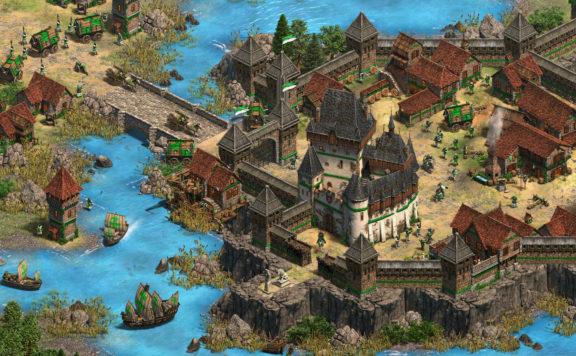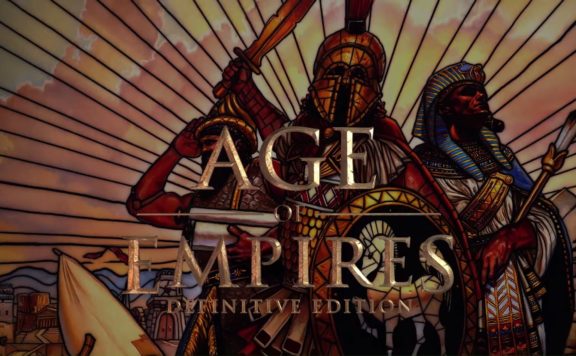If your finger is hovering over the buy button and you’re just about ready to take on Iron Conflict and the brand new Helicopter update that just landed, then these tips should make conquering the battlefield a little easier.
Let’s be honest, whether you’re riding into battle for the first time or a veteran combat analyst, getting started in a new campaign can sometimes just be a case of turtling hard and pushing for a literal tank rush. However, that’s not really an option in Iron Conflict. This massive multiplayer strategy game puts you in charge of select units pulled from WWII up to modern-day, which you and your teammates need to utilize to overcome an opposing force. If you’re more used to a traditional build and battle RTS or still thinking of getting started then we’ve got some helpful tips for Angela Game’s gorgeous looking real time strategy adventure.
Prepare, Position, and Pick Your Strategy
Vary up your strategies as you progress through the tiers. At the beginning of the game, you’ll start with early Cold War-era units like towed AA units, towed artillery, and basic infantry, bombers, and tanks. In later tiers, you’ll start unlocking more advanced, versatile units such as fighter jets with missile launcher accessories, mobile AA and artillery, anti-air rocket launchers, and surface-to-surface ballistic missile launchers. In the most recent update, Angela Game released helicopters, which begin at Tier VI on the aircraft tech tree. The roles that each of these units plays vary, especially considering the fact that the two factions’ tiers aren’t fully symmetrical. The meta changes as you start unlocking more powerful units, so adaptability and versatility are key to staying at the top of your game. A good way to do this is to study the types of units that other players are using and just as importantly, how they are using them. This will help you figure out where to spend your hard-earned EXP and Silver when you want to upgrade and unlock units.
Form Up

Your formation is everything. Iron Conflict is a game designed around using three different units with varying abilities and stats at the same time. Before a battle, you’ll need to develop a game plan, and build out your formation accordingly. Learning how recon units complement your attack force, how AA units can help protect your artillery and missile launchers, how your fighter jets can protect your bombers, and how medium tanks can fill a variety of roles, is all just the beginning. You’ll also want to coordinate with your team members to build a comprehensive fighting force that can cover all your bases (literally and figuratively).
Don’t Forget About The Enemy
Spotting enemies is one of the key aspects of the early game. Knowing where your enemies are is the best way to get a tactical advantage early on. Units such as scout soldiers and recon planes have powerful visual range and will help you spot the movements of the enemy’s units. Getting the first spot on an enemy yields EXP, and killing a unit that you’ve spotted yields even more. As such, early recon is a strategy that pays off in the long run. Besides, you don’t want to dispatch your slow-moving heavy tank to one area, only to find out that the bulk of the enemy’s forces are on the other side of the map. Knowledge is power.
Don’t be Like Lieutenant Leeroy
For infantry units, concealment is the name of the game. In the current version of the game, infantry units are divided into the fighter and scout types. While the fighter units have more weapons at their disposal, they still lack the armor that would allow them to fight a tank head-on. With both types of infantry, you’ll need to stay concealed. The fighter infantry can stay hidden until enemy armored units are in just the right spot for an ambush. The scout infantry should stay hidden at all times, providing the rest of your team with valuable intel from the shadows.
Set That Trap

Positioning is also important in Iron Conflict. Tanks feature stronger armor on the front, so when coming up against enemy tanks, try to manoeuvre around to their rear to deal more damage. This is especially important when you’ve got a light or medium tank, and the enemy’s got a heavy. The same is true of aircraft armor. Another aspect of positioning to consider while using bombers is your approach. Your bomber will only be able to drop a certain number of bombs in a row before needing to reload, and can’t exactly turn on a dime. Knowing where your enemies will be when you drop your payload is critical, as is lining yourself up for your next bombing run.
Not That Type of Accessory
Accessories are parts that can be purchased with the Silver you earn from battle. Most units can equip three normal accessories. Some accessories increase the stats of a unit, like the Governor, which increases a tank’s movement speed. Other accessories can provide abilities not otherwise available to the unit, for example the Rocket Launcher and AT Mines that a fighter soldier can equip. Certain unit types also have special accessories that only they can equip, potentially giving them unique advantages.
In short, it’s important to explore all the ways you can outfit your units. There are many different ways to customize them, giving you a great amount of freedom to tailor them to your playstyle.
Pay Attention to the Ammo Too
Units in Iron conflict can swap out a variety of ammunition, changing the way that they play. When it comes to Ammo, High Explosive ammo deals lots of damage, but a great portion of it can be negated when an enemy’s unit has lots of armor, such as heavy tanks. In such situations, ammo with a higher ratio of penetration to damage such as AP and APCR ammo may be more suitable. Like accessories, different types of ammo is purchased with Silver from the main menu, but when a unit has multiple different types of ammo, you can switch between them on the fly in battle.
It’s Not All About The Tank Rush
Sure, a common way to out the opposition is getting those tanks rolling out, but did you know that AA units can be just as effective in some situations. Certain AA units can attack ground units as well as air units.
Perhaps you’ve come across a lightly-armored enemy unit like another AA unit and you don’t have a tank handy, or your tank simply can’t get a bead on an enemy infantry unit in time. In cases like these, AA cannons can come through in a pinch. Though they don’t do as much damage as tank shells do and won’t stand much of a chance against a tank’s armor, they can fire rapidly, allowing you to deal fatal damage to pesky light units.
Time to Attack

Now we’ve pointed out that timing your attack is a big deal, you will want to save those airborne attacks. When used correctly, bombers such as the B-52 and B-2 can rack up lots of kills. However, the best strategy isn’t usually to rush in and get kills early. Early on in the match, the enemy will have lots of AA units, and your own AA units haven’t had a chance to take out the enemy fighter planes prowling the skies. Save your bombers for when enemy ground forces are gathered at capture points or are rolling through chokepoints. By this point, enemy units may be low on HP, leaving open the possibility of getting a multi-kill with a single bombing run.
As for how to use helicopters in the latest update, we’re still busy working out how they fit best, although it’s safe to say there’s a lot more tank wreckage hogging the battlefield right now. Whether you’re battling up the rankings tog et your butt in a top of the line tank or rolling out with an MA118 for the first time then hopefully these tips will prove useful. You can check out more about Iron Conflict and the new helicopter update over at the official Steam Store page now.







